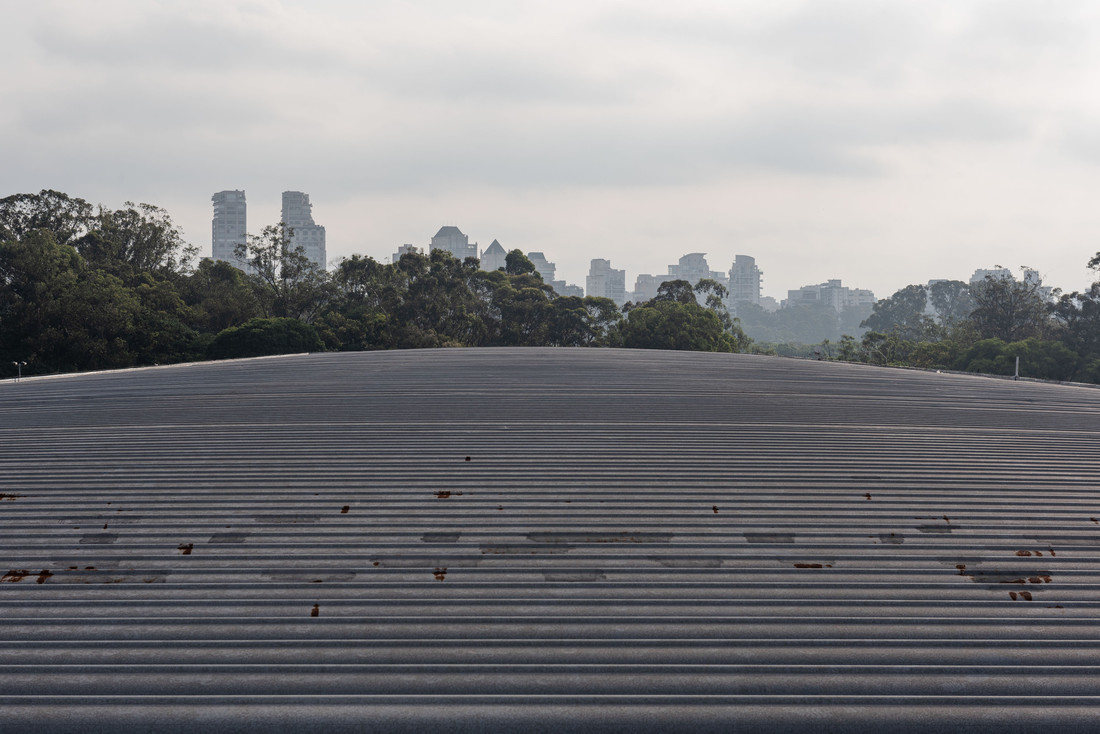
Throughout the process of constructing the 34th Bienal de São Paulo, its curatorial team, participating artists and guest authors will send out letters with open dialogues that directly and indirectly reflect the development of the exhibition. The text below was written by the curatorial assistant, Ana Roman.
In Hebrew, rauch can mean both wind and soul. In some cases, the word is used to describe complex human constructions, like the human sciences, which are called madaei haruach. The polysemy of rauch leads us to an old association between "breath" and individual and collective human existence, where "breath", or wind, is responsible for giving life to the being, which, through it, moves and is made human.
I would not attempt, in a brief text, to go into the philosophical debate about such an issue, much less into the extensive genealogy of words that refer to this life-giving breath. What I put forward here is a liberal extrapolation from the Hebrew: soul is also wind. The pulse and breath of existence are also wind. Breathing is wind.
Between November and December 2020, Vento [Wind], an anticipatory exhibition of the 34th Bienal de São Paulo, took place at the Ciccillo Matarazzo Pavilion. It was conceived as a change in the trajectory of the large collective exhibition, which has been postponed until September 2021. In Wind, we delved into a reflection on the invisibility of things, on the insurmountable space that exists between them, and, even more so, on the intangible – all of which have characterized our social experience in recent months. In Joan Jonas' work, which serves as the exhibition's title, the performers carry out a choreographed piece on a Long Island beach on one of the coldest days of 1968. The wind visibly asserts itself as an external force to the bodies, defining their limits and movements. Yet, it is also present as an internal force: the wind is a vital element. A simple and involuntary gesture, responsible for life and for movement.
Recently, images and stories coming from Manaus have led us, once again, to reflect on the way that we relate to our breathing. In 2014, with the murder of Eric Garner, there was the first echo of "I can't breathe", the phrase repeated by George Floyd Jr. as he was brutally murdered in 2020. These events are added to so many others where certain human lives seem to have less value than others. They point to an asymmetry between the possibility of breathing and the impossibility of sharing the same humanity. That which is given as natural and essential – breathing – is mediated by power relations that reflect the most cruel aspects of violence and colonialiality. We do not share the wind equally, and we do not have the same right to breathe.
In recent months, we have arrived at important reflections on humanity in the face of the Covid-19 pandemic, and we have built a discursive and theoretical framework from generalizations about the individual, their loss of temporal and spatial experience, and about human fragility confronted with the threat of the virus. Meanwhile, the brutal images that reach us reinstate the importance of reflecting on the regime that distributes our wind. By silencing the societal, racial and gender inequalities that characterize that distribution, we are almost witnesses to the complex mechanisms of exercising biopower and realizing necropolitics.
In this scenario, marked by violence and cruelty, it is important to assume responsibility for the situation we are faced with. A change in the world and in the regimes that distribute the wind will come from political changes. However, for a radical and necessary change, we must try to invent and imagine other possible futures.
I recently read an interesting story by Donna Haraway entitled "The Camille Stories: Children of Compost".¹ The author describes a scenario of Earth's destruction in the so-called Capitalocene, a period marked by wars, mass extinctions and multispecies genocide, caused by human activity. They are themes which, although derived from fiction, are not far from our reality. To save the planet, interspecies communities are organized based on a proposal of diverse kinship, which will be responsible for the preservation and reproduction of life.
The text evokes a new cosmogony, and the planetary chaos is overcome by a non-patriarchal and non-anthropocentric logic. This fictional radical proposal can be understood as another structure of breathing. A different understanding of the soul and its relationship with the wind that surrounds it. The very idea of fiction in our context of hopelessness is a breath that gives life to new possibilities. In the reality we are faced with, imagining other winds, other relationships and other ways of life is already, in itself, defiance.
¹ HARAWAY, Donna J. “The Camille Stories: Children of Compost”. In: Donna J. Haraway, Staying with the Trouble: Making Kin in the Chthulucene. Duke University Press, 2016.

